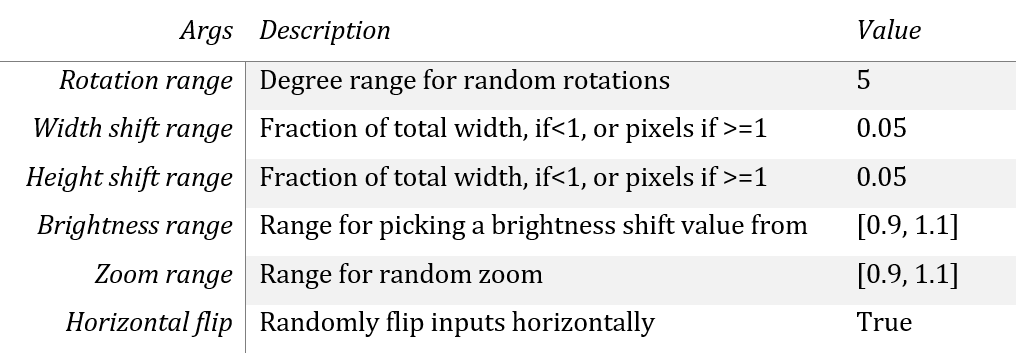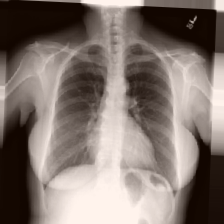This project classifies chest X-ray images using a customized DenseNet121 neural network model.
- Technologies
- Dataset description
- Data preprocessing
- Proposed model
- Methodology
- Results
- Requirements
- Credits
This dataset of chest X-ray (CXR) images was sourced from Kaggle.
It contains 3616 COVID, 6012 Lung Opacity, 10192 Normal, and 1345 Viral Pneumonia CXR images.
Every image was PNG, grayscale, and 299 x 299 pixels.
Images were processed using tf.keras.applications.resnet50.preprocess_input, which converts images from RGB to BGR
and then zero-centers each color channel with respect to the ImageNet dataset without scaling. The images were also
resized to 224 x 224 for ImageNet compatibility reasons.
In addition, real-time data augmentation was done. The table below details the parameters used.
For visualization purposes, some augmented pictures were saved to aug_images folder via the save_to_dir arg.
New bottleneck layers and a classifier head were added to a pretrained DenseNet121 model.
base_model = DenseNet121(
include_top=False,
weights='imagenet',
input_tensor=Input(shape=(IMG_DIMS, IMG_DIMS, 3)),
input_shape=(IMG_DIMS, IMG_DIMS, 3))
model = Sequential()
model.add(base_model)
model.add(Flatten())
model.add(BatchNormalization())
model.add(Dense(1024, activation='relu'))
model.add(Dropout(0.4))
model.add(BatchNormalization())
model.add(Dense(512, activation='relu'))
model.add(Dropout(0.4))
model.add(BatchNormalization())
model.add(Dense(256, activation='relu'))
model.add(Dense(4, activation='softmax'))The base model layers were frozen, resulting in 52,141,828 trainable and 7,140,712 non-trainable parameters.
The table below summarizes the dataset partition details.
Images and were trained for 25 epochs with a learning rate of 1e-4. The learning rate was lowered to 1e-5 for the last 5 epochs.
Output predictions were generated for the test input samples and compared to the true label values.
See sklearn.metrics.classification_report and sklearn.metrics.ConfusionMatrixDisplay for more details.
Third party imports: matplotlib, numpy, IPython, PIL, sklearn, tensorflow, splitfolders






















